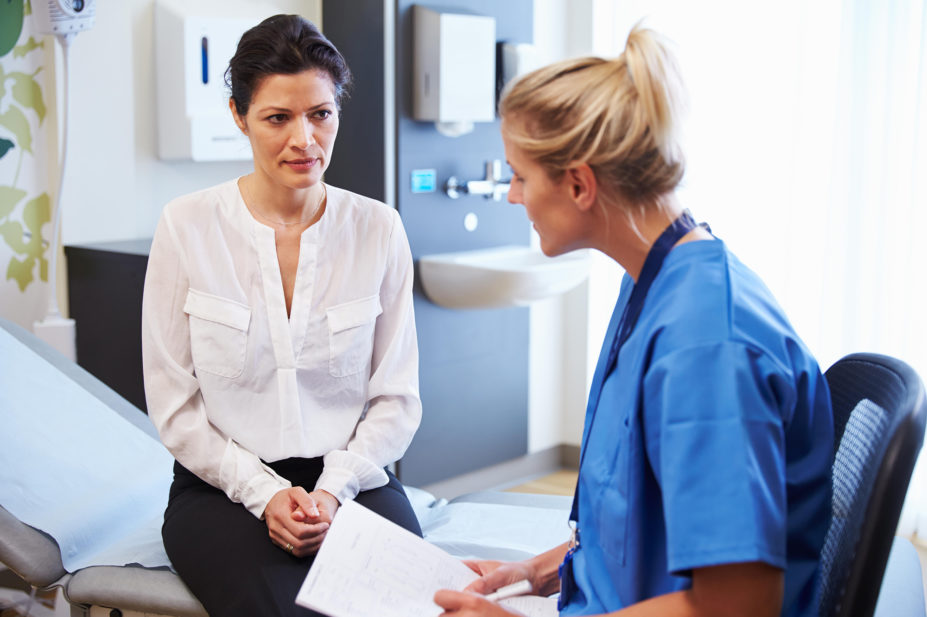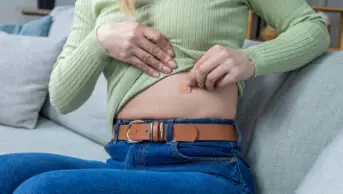
MBI / Alamy Stock Photo
The risks posed to unborn babies if women take valproate during pregnancy have been known, in some capacity, for more than 40 years.
The latest estimates are that up to four in ten babies are at risk of developmental disorders if valproate is taken during pregnancy, and approximately one in ten exposed babies are at risk of birth defects, such as spina bifida or malformations of the face, skull and limbs.
In 2018, the Medicines and Healthcare products Regulatory Agency (MHRA) issued a statement saying that valproate medicines — which are licensed for use in epilepsy and bipolar disorder, and used off-label for depression, neuropathic pain, dementia and migraine — must not be used in women of child-bearing potential unless the conditions of the ‘Pregnancy Prevention Programme‘ (PPP) were met.
Despite this, the first ‘Medicines and Pregnancy Registry’, published in February 2021, showed that more than 20,000 women of “childbearing potential” in the UK were taking valproate between April 2018 and September 2020. Of these, 16 women were prescribed valproate for the first time during their pregnancy.
The ‘First do no harm’ report by Baroness Cumberlege, published in July 2020, highlighted that, by not adhering to the PPP, the healthcare system was not addressing the health inequalities faced by women of childbearing potential who have mental illness and epilepsy.
The report laid out plans for immediate action to contact women across the UK who were taking valproate and invite them to meet with a specialist to go through the PPP steps; to confirm that valproate was still the most appropriate treatment for them; and to complete an annual risk acknowledgement form, which should be done at each annual treatment review.
Referrals will be linked to the primary care prescribing systems, which ensures all necessary information is available at the specialist review
Following on from these national actions, Surrey Heartlands Integrated Care System (ICS) Medicines Safety Group carried out primary care audits of adherence to the PPP in women taking valproate. The audit results highlighted a need for further action to ensure that every woman prescribed valproate within the ICS was being prescribed it appropriately and safely.
This began with a review of patients’ current valproate status with the specialist teams across Surrey Heartlands. Following this, Surrey and Borders Partnership NHS Foundation Trust (SABP) worked across the interface between primary and secondary care with colleagues in Surrey Heartlands Clinical Commissioning Group (CCG) and North East Hampshire and Farnham CCG to develop a robust system to manage the annual review of women and completion of the annual risk acknowledgement form.
The working group to design and implement this system included pharmacists, psychiatrists, IT specialists, members of the trust’s quality improvement team and a patient taking valproate.
For women managed within primary care, the system means that the GP will make a referral to the appropriate consultant. The referral will be linked to the primary care prescribing systems, which ensures all necessary information is available at the specialist review.
Following this review, the woman taking valproate will either remain on the active caseload if she is also receiving care from a service within the trust or, if she is stable and an annual review is all that is required, she will be put on a new ‘virtual’ caseload. Previously, patients who only required an annual review would have been discharged back to primary care.
Teams are then able to review their virtual caseload through a carefully designed dashboard that gives the overarching status of the service according to its key performance indicators; for example, women requiring an annual review within the next three months or women who are overdue their review. The dashboard will also be used to identify women who are approaching their annual review to invite them into clinic without the need for GP referral, as well as highlighting those who have not engaged with the annual review, allowing us to notify their GP. In these cases, a discussion would be undertaken between the specialist and GP to agree the next appropriate steps.
Advice from the MHRA, published on 6 May 2020, on the management of remote appointments to complete annual reviews has also been encompassed within the pathway; the system documents confirmation of completion of the annual risk acknowledgement form and receipt of the patient education materials.
Our work has also highlighted the need for the annual risk acknowledgement form and associated materials to be available in various formats and languages to ensure that all women are able to read and understand them. This is being actively followed up with the MHRA and manufacturers of valproate products.
The SABP has also set up a dedicated email address for any enquiries about the PPP relating to women taking valproate for a mental health condition within the Surrey Heartlands ICS and neighbouring areas served by the trust. Enquiries are managed by a range of staff, including digital technology experts, pharmacists and specialist medical staff.
The response to this work has been hugely positive. One clinician said the improvement work and digital redesign with valproate felt “groundbreaking”, while another said that the virtual caseload, dashboard and recall system gave them confidence.
The project has also given us the opportunity to engage with women who are taking valproate to hear their concerns first hand, as well as their expectations around the safe prescribing and supply of valproate products.
The development of this innovative system has revolutionised the care of a vulnerable patient group. We will continue to use quality improvement methodology to further improve the system as feedback is received and look forward to supporting its spread across the ICS.


